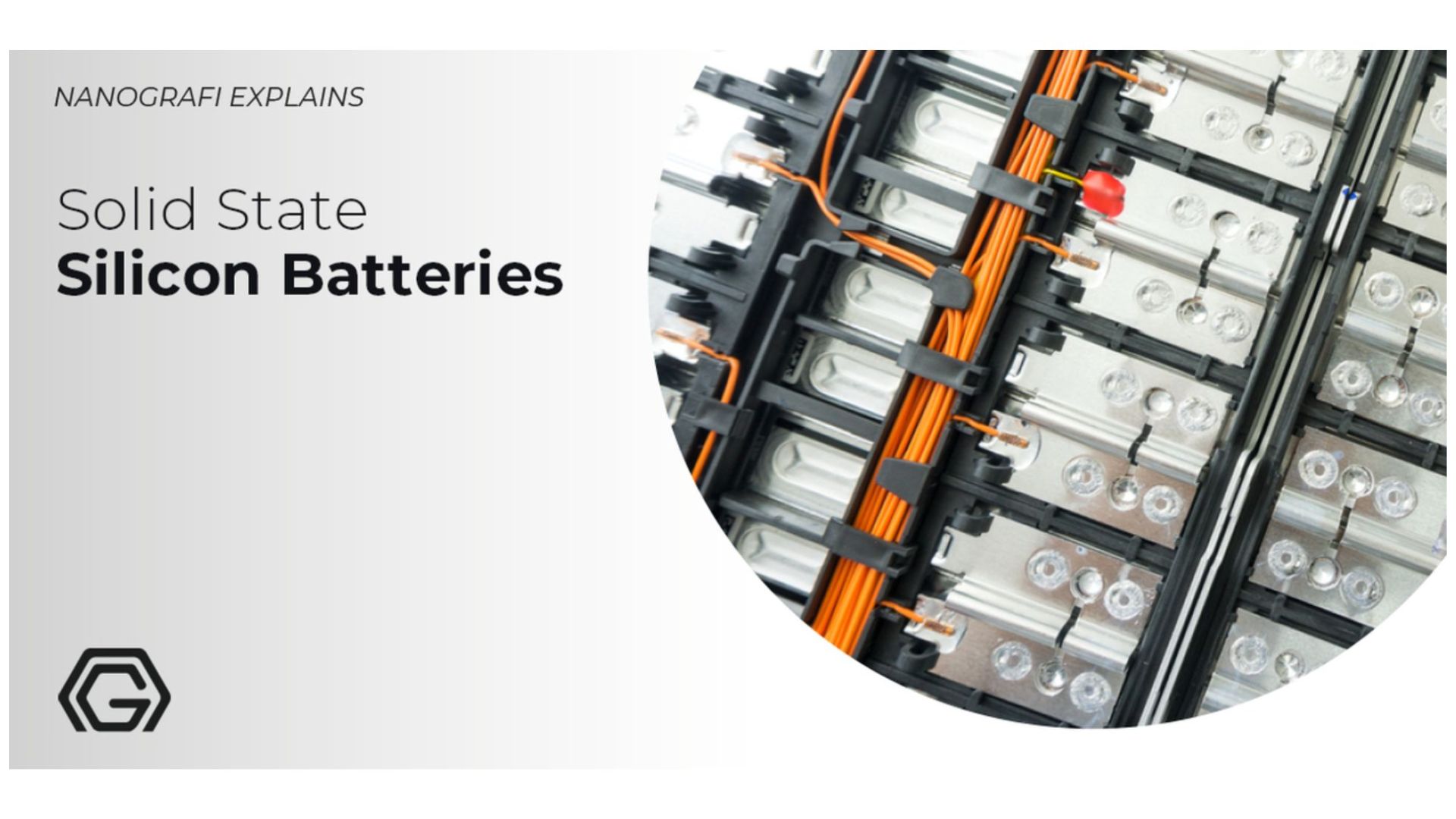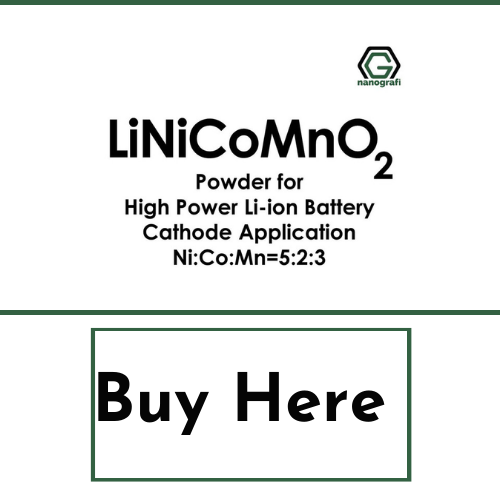Lithium-Silicon Batteries
Lithium-ion batteries are the now dominating chemistry within battery applications, having 60% of worldwide sales values in portable batteries. Lithium-ion chemistries have the highest energy density among the commercialized rechargeable batteries today which originates from their high working potential combined with their high capacities and low weight.
Yet their performances are not enough for some future demands, which include electric vehicles, power grid load levelling, and peak shaving, which together set a new list of demands on batteries in terms of lifetime, power, and energy density.
Introduction
Lithium-ion batteries (LIBs) are one of the most widely used secondary battery systems. Compared to other rechargeable batteries, such as nickel-cadmium and nickel metal hydride batteries, LIBs are featured with higher energy density, higher operating voltages, limited self-discharging and lower maintenance requirements. Generally, a lithium-ion battery consists of an anode and a cathode on two separate current collectors. Also, the electrolyte allows lithium ions to travel between the electrodes, and a separator keeps the anode and the cathode from making direct contact. The cathode usually consists of a metal oxide, and the anode tends to be a carbon material. Lithium-ion batteries charge and discharge through a process of lithiation (lithium insertion) and de-lithiation (lithium extraction) by means of electrochemical reactions. In this process, lithium ions diffuse back and forth through the electrolyte between the anode and the cathode.
Advantages of Silicon Anodes
During de-lithiation (discharging) the lithium bonded with the anode material breaks apart, producing lithium ions and electrons, where the lithium ions travel and bond with the metal oxides on the cathode side and the electrons produce the electrical energy that power devices. During lithiation (charging), the lithium metal oxides from the cathode break apart, producing lithium ions that pass through the electrolyte and bond with the material on the anode side with the addition of electrons. However, the current commercial graphite anode cannot meet the increasing demand on energy density, operation reliability and system integration arising from portable electronic devices, electric vehicles, and energy storage applications. Graphite anodes exhibit only a moderate intrinsic specific capacity (372 mA h g-1) and serious safety concerns due to lithium plating and further formation of lithium dendrites. Consequently, studies on new generation anode materials with the characteristics of high capacities, a proper charging/discharging potential, as well as safe and low-cost manufacturing and usage have attracted great attention from both, academia and industry. Among all potential lithium-ion battery (LIB) anodes, silicon (Si) is one of the most promising candidates to replace graphite due to following reasons: (1) Si possesses the highest gravimetric capacity (4200 mA h g-1, lithiated to Li4.4Si) and volumetric capacity (9786 mA h cm-3, calculated based on the initial volume of Si) other than lithium metal; (2) Si exhibits an appropriate discharge voltage at ca. 0.4 V in average, which finds a good balance between retaining reasonable open circuit voltage and avoiding adverse lithium plating process ; (3) Si is abundant (second richest in earth crust), potentially low cost, environment friendly, and non-toxic.
Problems with Silicon Anodes
As good as silicon's performance potential is for advanced lithium-ion batteries, there are some complications involving silicon's behavior. The problem lies with silicon's tendency to expand approximately 400% of its original size during lithiation, then reducing to a varying size during de-lithiation. This drastic volume expansion (around 360% for Li4.4Si) and huge stress generation are accompanied with the lithiation/ de-lithiation process of Si, which causes series of severe destructive consequences. (1) Electrode structure integrity is deteriorated due to gradually enhanced pulverization during repeated discharge/charge processes; (2) disconnection between electrode and current collector happens induced by the interfacial stress; (3) continuous consumption of lithium ions occurs during the continuous formation-breaking-reformation process of solid electrolyte interface (SEI) layer. All these processes accelerate electrode collapse and capacity fading in a synergistic way. Besides, the critical problem of volume expansion, the poor intrinsic electron conductivity of Si also contributes to the sluggish electrochemical kinetics. The 400% expansion is a figure found using imaging technology to confirm and record different Li-Si phases with increasing lithium content. It should be noted that silicon isn’t the only material that suffers from such volume expansion; other high capacity material such as tin (Sn), germanium (Ge), and antimony (Sb) have the same volume change issue. This expansion produces stress and strain on the silicon particles, causing cracks and breakage. The process of the silicon breaking down is known as pulverization. Due to this pulverization, electrical isolation of silicon fragments causes a loss in contact with neighboring fragments. In addition, the space created from the expansion pushing surrounding conducting material away from the active material also causes a loss of contact, resulting in low electrical conductivity. Without strong electrical contact with the current collector, the silicon fragments are not lithiated or able to contribute to the battery's capacity. This behavior yields low capacity stability and rapid capacity degradation over a number of cycles. Figure 1 illustrates how pulverization affects the silicon particle and how the expansion reduces the conductivity from the loss of contact with neighboring particles.
To get more information about silicon batteries,
you can read our blog post here.
Another issue that contributes to the fast anode degradation is the solid-electrolyte interface (SEI). The SEI forms on the surface of the electrode during the first lithium insertion phase and works like a barrier between the electrolyte and the electrode. It is formed from the solvent and the decomposition of the salt in the electrolyte. This barrier allows lithium-ion conduction and is an insulator to electron flow, which limits further electrolyte decomposition and prevents the cycle performance of the lithium-ion battery from dropping continuously. Battery performance, irreversible charge “loss”, rate capability, and cyclability are highly dependent on the quality of the SEI.
Graphite vs Silicon Anodes
Graphite, currently the primary anode material used in commercial lithium-ion batteries, has a theoretical gravimetric capacity of 372 mA h/g. This active material is highly used because of its low and flat voltage plateau at about 0.1–0.2 V during discharge and its low and reasonable price. Graphite also displays great stability and high capacity retention during cycling. However, besides the low capacity of graphite, some complications hinder its potential for use in advanced batteries. For example, graphite is sensitive to certain electrolytes. Ethylene carbonate and propylene carbonate are some commonly used solvents for the electrolyte in lithium-ion batteries. While ethylene carbonate-based electrolytes are always used with graphite anodes in lithium-ion batteries, propylene carbonate-based electrolytes are not compatible with graphite anodes because the propylene carbonate decomposes on the graphite surface, accompanied by graphite exfoliation.
Anodes tend to consist of three parts: the active material, the conducting material, and the binder. Traditionally, the active material is usually graphite (with a stoichiometry of LiC6), the conducting material is a carbon material like acetylene black, and the conventional binder is polyvinylidene fluoride (PVDF), all uniformly dispersed in an N-methyl-pyrrolidone (NMP) solvent. The NMP solvent is needed because PVDF binder dissolves in only NMP and not water.
Since the capacity of graphite is low for large-scale applications like electric vehicles, there has been a push to develop new and better anode materials with a high capacity, preferably at low potential. As a benchmark, the next-generation anodes need to have at least a stable specific capacity of 1000 mA h/g. At present, silicon (Si) is potentially the best replacement for the graphite anode material because it has a high theoretical gravimetric capacity of 4200 mA h/g at very low potentials. The large difference in capacity between silicon and graphite arises because a silicon atom can bond with up to about four lithium ions (stoichiometry of Li4.4Si/Li22Si5) while it takes six carbon atoms to bond with only one lithium ion. Eqs. (1) and (2) are the half reactions for the silicon and graphite anodes, respectively.
Silicon is recognized as one of the most promising candidates for next generation lithium-ion battery anode to replace the conventional carbon-based anode due to its high theoretical capacity, proper discharge potential and reliable operation safety. However, the critical drawback of huge volume expansion upon lithiation causes series of adverse consequences, leading to very poor cyclic stability. It has been one of the central issues to improve the cyclic performance of the Si-based anode for real practical applications.
Conclusion
The silicon nanotube and nanowire have shown that they can address the main issue of pulverization that can't be resolved through normal silicon nano-powders. However, well-controlled nanostructures pose difficulties for the potential manufacturing procedure. The process by which some of these structures are synthesized could potentially result in high manufacturing cost, at least compared to traditional slurry methods. Large-scale manufacturing of anode materials needs to be technically feasible, low cost, and reproducible.
Ultimately, the use of silicon and novelty carbon structures seems to be the most effective means at addressing the problems involved with the silicon anode. This is evident from the many studies involving the use of novelty carbon, especially graphene and reduced graphene oxides. In addition to the fact that carbon materials help improve conductivity, the combination of carbon with silicon helps stabilize the SEI layer, contain the volume expansion, and buffer the effect of pulverization. Moreover, the synthesis process is potentially more cost effective and applicable to the convenient method of slurry formation.
As it stands, there are still some goals that need to be addressed for the silicon anode, in addition to the 1000 mA h/g capacity benchmark. Increased initial coulombic efficiency and higher capacity retention are two of the major goals. Reducing the lithium ions lost during the first cycle is still a challenge, depending on the fabrication approach, but just as there has been in the past few years, progress will be made in the future.
To get more information, you can visit Blografi.
References
1.Zhang, J., Wang, W., Xiao, J., Xu, W., Graff, G. L., Yang, G., . . . Liu, J. (2012). Silicon-Based Anodes Li-ion battery, see also lithium-ion battery silicon-based anodes for Li-Ion Batteries Li-ion battery, see also lithium-ion battery. Encyclopedia of Sustainability Science and Technology, 9293-9316. doi:10.1007/978-1-4419-0851-3_496
2.Recent development of electrode materials in lithium ion batteries. (n.d.). Solid State Ionics for Batteries, 95-132. doi:10.1007/4-431-27714-5_4
3.Casimir, A., Zhang, H., Ogoke, O., Amine, J. C., Lu, J., & Wu, G. (2016). Silicon-based anodes for lithium-ion batteries: Effectiveness of materials synthesis and electrode preparation. Nano Energy, 27, 359-376. doi:10.1016/j.nanoen.2016.07.023
4.Xu, B. (n.d.). Silicon-based anode materials for lithium-ion batteries. doi:10.14264/uql.2016.228
5.Silicon Based Anodes and New Electrolytes for Next Generation Lithium-Ion Batteries and Lithium-Sulfur Batteries. (2018). ECS Meeting Abstracts. doi:10.1149/ma2018-01/3/337
6.Silicon/Carbon Nano-Composite Based Anodes for Advanced Lithium-Ion Batteries. (2015). ECS Meeting Abstracts. doi:10.1149/ma2015-01/2/270
7.https://en.wikipedia.org/wiki/Lithium%E2%80%93silicon_battery
8.Lai, S (1976). "Solid Lithium Silicon Electrodes". Journal of the Electrochemical Society. 123 (8): 1196–1197.
Recent Posts
-
Nanocomposites in Food Packaging
The utilization of nanocomposites in food packaging represents a significant advancement in the fiel …19th Apr 2024 -
What is the Difference Between 7075 and 6061 Aluminum Alloy?
When comparing 7075 aluminum alloy to 6061 aluminum alloy, it's essential to understand their disti …5th Apr 2024 -
Iron-Air Batteries: The Ultimate Guide
Iron-air batteries represent a significant breakthrough in energy storage technology, offering a sus …29th Mar 2024







